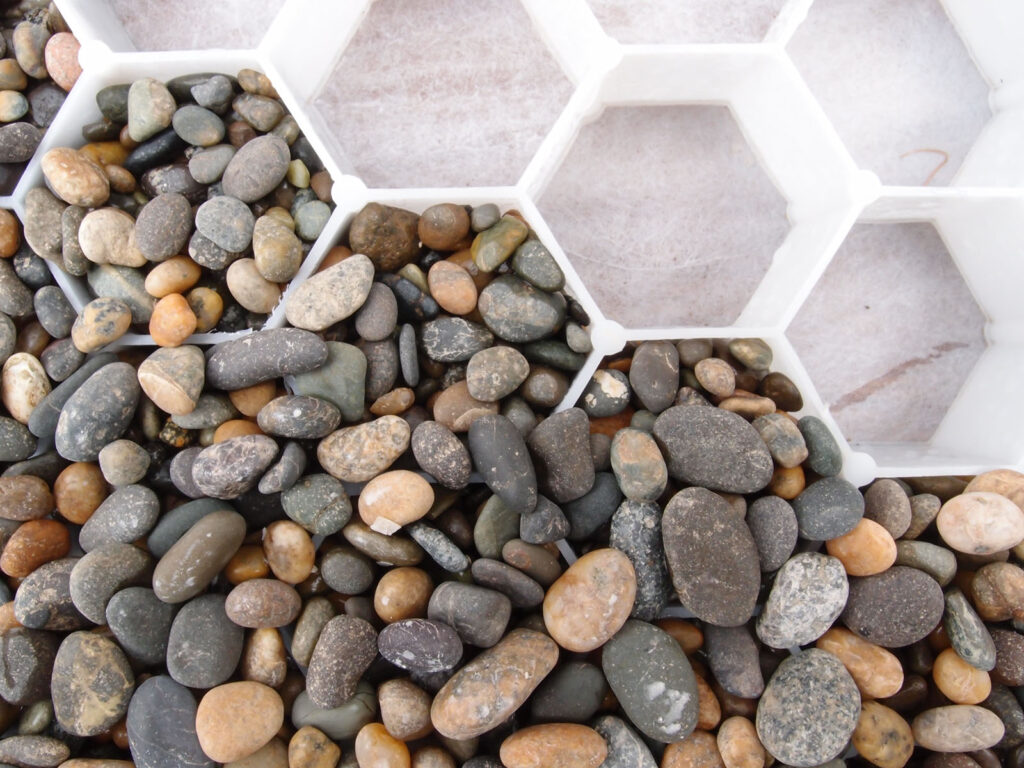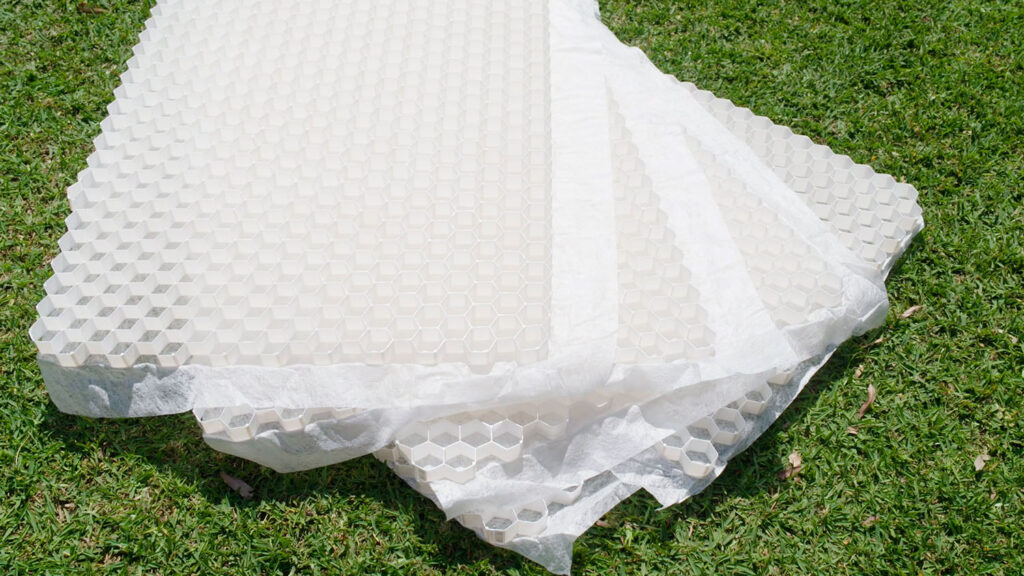Facebook
Twitter
LinkedIn
Pinterest
Reddit
WhatsApp
How Permeable Paving Helps Reduce Urban Heat in Australian Cities
Australia’s cities are getting hotter. With more concrete, asphalt and steel in urban areas, heat is trapped and stored, creating what’s known as the urban heat island effect. This makes cities significantly warmer than surrounding rural areas, increasing energy consumption, straining infrastructure and putting public health at risk.
One effective way to combat this issue is by changing the way we pave our streets, driveways and public spaces. Permeable paving, such as Natural Paving, provides a cooler, more sustainable alternative to traditional hard surfaces, and is something every home owner should consider. Unlike concrete and asphalt, permeable paving allows water to filter through the surface and into the ground below. This simple difference plays a major role in reducing urban heat.
In this blog, we’ll explore how permeable pavers help lower urban temperatures, reduce stormwater runoff and create more comfortable, sustainable cities across Australia.
Understanding the Urban Heat Island Effect

Before looking at how permeable paving makes a difference, it’s important to understand what causes urban heat islands.
Cities are filled with dark, hard surfaces like roads, footpaths and parking lots. These materials absorb and retain heat during the day, slowly releasing it at night. Unlike natural landscapes, which can cool down through evaporation and vegetation, urban environments trap heat, leading to higher temperatures.
Some key factors that contribute to urban heat include:
- Impermeable surfaces: Concrete and asphalt prevent water from seeping into the ground, reducing cooling through evaporation.
- Lack of vegetation: Trees and plants provide shade and release moisture into the air, helping to cool the surrounding environment.
- Dark materials: Traditional paving absorbs sunlight and holds onto heat for longer, compared to lighter, more reflective surfaces.
With climate change driving more frequent and intense heatwaves, reducing urban heat is more important than ever. Permeable paving offers a practical solution that helps cities stay cooler while also improving drainage and reducing flood risks.
How Permeable Paving Lowers Urban Temperatures

Unlike traditional paving, which prevents water from reaching the ground, permeable pavers allow water to pass through and be absorbed by the soil below. This process offers multiple cooling benefits.
- Evaporative Cooling
One of the biggest advantages of permeable paving is its ability to support natural evaporative cooling. When rainwater or irrigation soaks through the paving system, it slowly evaporates over time, helping to cool the surface and surrounding air.
Traditional concrete and asphalt don’t allow this to happen. Water simply runs off into drains, meaning the surface stays hot. Natural Paving, on the other hand, allows moisture to remain in the ground, where it can evaporate gradually, lowering temperatures in the process.
- Reduced Heat Absorption
Dark, solid materials like asphalt absorb a significant amount of solar radiation, heating up quickly during the day. Permeable paving surface materials, particularly those designed with lighter colours or filled with stones, reflect more sunlight and don’t retain as much heat.
Natural Paving can be filled with pebbles or decorative stones, rather than a solid, heat-absorbing material. This reduces overall heat retention and helps create a cooler environment.
- Increased Vegetation and Green Spaces
Permeable paving supports the growth of vegetation, grass and tree roots, unlike traditional paving that suffocates plant life by blocking water and air flow. More greenery means more shade and higher moisture levels in the surrounding environment, both of which help to counteract heat build-up.
Using systems like Natural Paving in driveways and pathways allows natural elements to integrate with urban design, creating cooler, more comfortable spaces.
Additional Benefits of Permeable Paving in Australian Cities

Cooling urban spaces is just one of the many advantages of using permeable paving. These systems also provide environmental and practical benefits that make them a better long-term choice for urban development.
- Reduced Stormwater Runoff and Flooding
Impermeable surfaces like concrete and asphalt prevent rainwater from soaking into the ground. Instead, water collects and flows rapidly into stormwater drains, leading to flooding and water pollution.
Permeable paving helps to slow down and absorb rainwater where it falls, reducing runoff and easing pressure on drainage systems. This is especially valuable in Australian cities where sudden storms can overwhelm infrastructure, leading to flash floods.
- Groundwater Recharge
By allowing water to seep through to the soil below, permeable paving helps replenish groundwater reserves. This is crucial for maintaining healthy ecosystems, sustaining plant life and preventing soil degradation in urban areas.
In regions that experience extended dry periods, this water retention is vital for supporting long-term sustainability.
- Low Maintenance and Durability
Traditional concrete and asphalt surfaces tend to crack and deteriorate over time, particularly under Australia’s harsh sun. Permeable paving systems, particularly modular designs like Natural Paving, offer greater flexibility and durability.
Since these pavers are designed to distribute weight more evenly, they are less prone to cracking and shifting, making them a cost-effective and low-maintenance solution.
- Better Air Quality
Hot surfaces like roads and pavements contribute to poor air quality by increasing the temperature of the surrounding air. Higher temperatures can also lead to increased airborne pollutants and smog.
By reducing heat retention and supporting green spaces, permeable paving plays a role in improving overall air quality in urban areas.
Where Permeable Paving Works Best

Permeable can be used in a variety of urban spaces to maximise cooling and drainage benefits. Some of the best applications include:
- Driveways and residential pathways – SurePave and PebbleLock provide a strong, stable surface for cars and foot traffic while allowing water to drain naturally.
- Car parks and public spaces – Replacing large areas of asphalt with permeable paving helps reduce heat build-up and improve stormwater management.
- Footpaths and pedestrian areas – Cooler surfaces create more comfortable spaces for people walking or exercising.
By incorporating permeable paving into more urban projects, Australian cities can take a proactive approach to reducing heat and managing water more effectively.
As climate change continues to drive higher temperatures and extreme weather, Australian cities need to prioritise solutions that reduce urban heat and improve sustainability. Permeable paving is an effective way to create cooler, greener environments, helping to combat rising temperatures while offering practical benefits like improved drainage and durability.
Products like Natural Paving provide an efficient, long-lasting alternative to traditional hard surfaces. By allowing water to filter through, reducing heat absorption and supporting vegetation, these systems help cities stay cooler and remain more liveable.
For homeowners, landscapers and urban planners looking for a smarter way to manage heat and water, permeable paving is a solution that enhances tomorrow, creating a future where Australian cities are more comfortable, sustainable and resilient.
